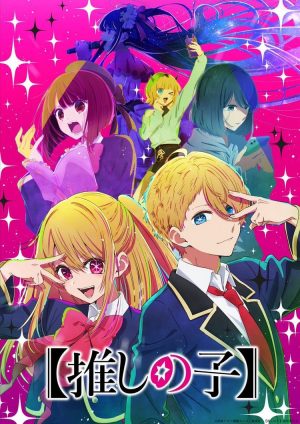
When we talk about the greats among Japanese anime directors, then the late Satoshi Kon will always be mentioned in that conversation. The legendary director may only have four titles under his belt, but all of them are timely classics that have always been a staple in the "best of" lists for anime movies.
Out of Satoshi Kon's four movies, two of them have a really surreal visual style, and yet the overall story is still perfectly coherent and can be easily digested by most viewers. So how can he create such a unique and mind-blowing visual and still manage to convey the story properly to the audience? This article will explore some of the possible answers to that question.
The Stories of Paprika and Millennium Actress
Let's begin with the story first. Millennium Actress is a movie released in 2001, and it tells the story of Chiyoko Fujiwara, a 70-year-old woman who used to be one of the greatest actresses in her era. The movie begins with an interview with the legendary actress about her childhood, how she got started in films, her past works, and her tragic love life.
As the story progresses, the lines between reality and fiction begin to blur. Chiyoko's muddled memories ended up weaving her real-life past experiences with the roles that she had played in her movies. The result is a surreal and heartbreaking story of love that was never meant to be.
Paprika was Satoshi Kon's fourth and last movie. It was released in 2006 and just like Millennium Actress, this movie also thrives in seamlessly blending reality and fiction. However, unlike Millennium Actress which weaves the movies and reality together, Paprika mixed dreams and reality in one chaotic cocktail by using a device called DC Mini.
The device was created in order to help psychiatric patients by analyzing their dreams. Unfortunately, somebody steals some of the devices and uses them to invade other people's dreams and make them unable to distinguish between dreams and reality. It is up to the titular character, Paprika, to sort out all of this mess and wake everybody up from the crazy nightmare.
How Satoshi Kon Tells a Surreal Story
1. Clever Transitions
Out of every fun and confusing thing that happens in both movies, the one most obvious technique used by Satoshi Kon in order to sell the chaotic fiction vs reality concept is the clever transitions between scenes. This technique forced the viewers to pull back and say, "Woah, what's happening here?", and therefore notice the fact that we are in a different realm now.
Some of them are subtle and carefully calculated hidden cuts, such as the time when Chiyoko talks to her husband in their home but then it suddenly turns into a movie set, or when a character talks to Paprika through a laptop but then he suddenly sits right in front of her and talks to her directly.
On the flip side, there are also some hard, in-your-face transitions that forcefully push the characters from one scene to the next, such as Chiyoko who begins the scene when she was a teenager trapped in a crashing train on her way to Hokkaido but ended up as a grieving empress on top of a besieged castle during the warring Sengoku period. Or the time when Paprika entered a man's dream as a moviegoer and then the scenes suddenly shift between different films as Paprika and the man take on different roles in each one.
2. Tonal Difference
The next notable thing that indicates which one is real and which one is fiction is the tonal differences. Satoshi Kon provides a noticeable difference in the overall tone of the story and the animation between the two realms of the story. Interestingly enough, both Paprika and Millennium Actress use this technique, but they utilize it in a different way.
The differences between the real world and the dream world are much more obvious in Paprika. The atmosphere of the real world is much more somber with relatively subdued colors and animation. The dream world, on the other hand, is much more exciting, colorful, and loud.
Millennium Actress, however, aimed to seamlessly blend the two worlds right from the start, and since it is a rather tragic story, the overall tone is also rather somber. That being said, you can still notice the difference between the two. The pace, the music, and the visuals of the story during the times when Chiyoko is in the movie world are much more dramatic than when she is in the regular flashbacks.
3. Timely Dialogs
One of the most interesting tests in the movie world that you can use to see whether or not your story is easy to follow is to let the audience see it purely through the visual, without any sound and dialog. Paprika and Millennium Actress will easily fail this test. Because both of these movies were designed to be consumed as a whole. After all, the sound is one of the ways for the viewers to differentiate between the real and fictional world, while the dialogs are the one thing that moves the story forward.
Millennium Actress use well-timed banters and commentary from the interviewers to let us know where we are in the story and even explain some of the weird visuals that we see on the screen. Paprika also uses dialog for relatively the same purposes. Only by paying close attention to what the characters are actually saying can we understand what is actually going on. That is why the timing of each sentence is extremely crucial for each movie. Because without it, we will be lost in the dazzling visuals.
Final Thoughts

Those are some of the tools that Satoshi Kon seems to use in order to tell a meaningful story while using such dizzying animation. In a way, it is actually a testament to how Satoshi Kon pushed what the medium of animation can actually do in terms of visual storytelling. Because some of the scenes in Paprika and Millennium Actress are extremely hard to replicate in a live-action movie. This combination of an interesting story and creative visual storytelling is what makes these movies so timeless and iconic.
Have you watched either Paprika or Millennium Actress? If you have, what do you think about it? Share your thoughts in the comment section below.
Recommended Post



